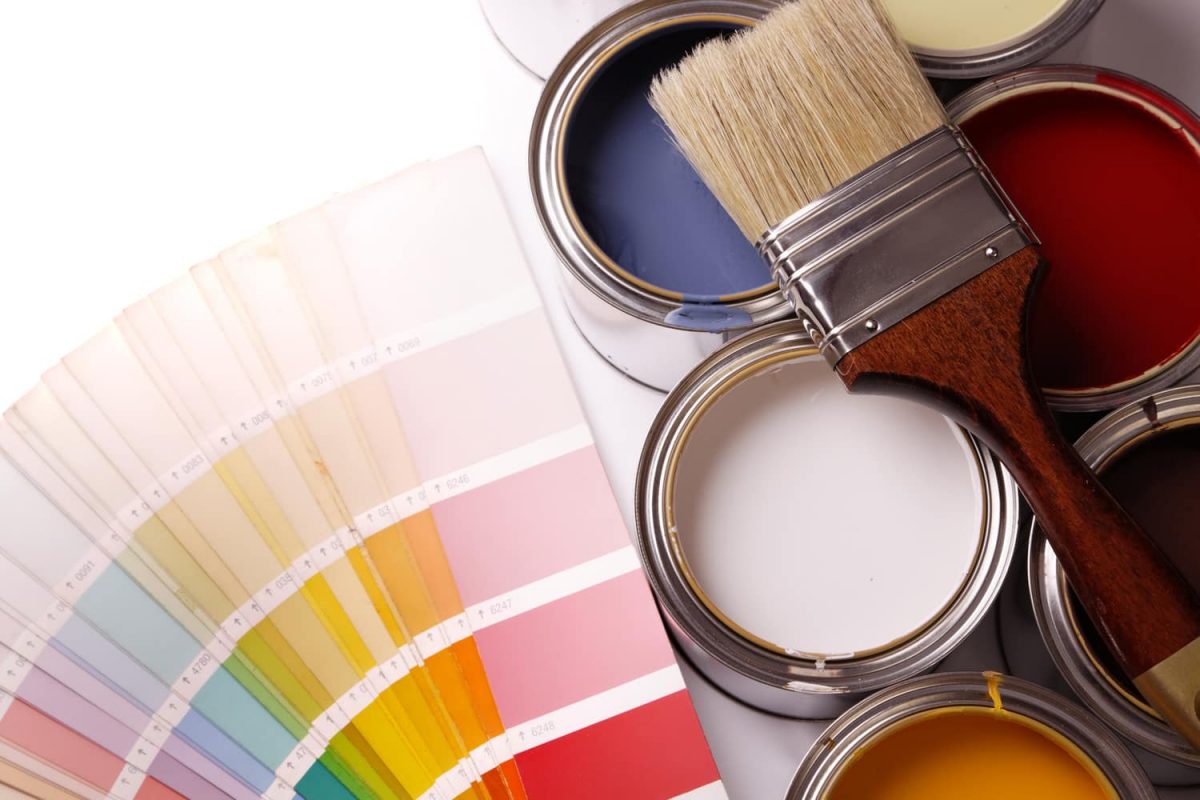Different paints have different formulas and while both interior and exterior house paint can be the same color, the chemistry behind each formula is very different. Both interior and exterior paints come in one of two types, either water-based or oil-based. However, beyond this similarity, they differ chemically based on their intended use.
Paint manufacturers and professional painters alike recommend that you use each paint according to its label. You should use interior paint inside and exterior paint outside. To understand why, it is important to understand the four basic components of paint and how these differ between the two types.
The Chemical Components of Paint
Pigment
Pigments are small particles that create paint’s color and texture. They protect the paint by reflecting ultraviolet rays and can improve impermeability, providing resistance to water and stains. The more pigment, the less glossy the paint will be. Higher-quality paints have more pigment, are easier to touch up, and will typically hide surface imperfections better than a lower-quality substitute. Pigments tend to be fairly similar between indoor and outdoor paints, although exterior paints may use more durable varieties.
Resin
One of the major differences between interior and exterior paint is the resin. This is what is left over when the binder dries. Binders hold the paint together and help it adhere to the surface where you apply it. Because exterior house paint is exposed to more extreme temperature variations, it needs more flexible resin. When the surface below the paint expands or contracts due to weather changes, a flexible resin prevents it from looking distorted. Conversely, indoor paints use rigid resins that make them more durable against abrasion and easier to clean.
Solvents
Solvents in paints are the “carrier” component and provide a way for the pigment to get from the container to the surface. A solvent works by thinning the paint, making it easier to apply. After you apply the paint, the solvents evaporate, leaving behind the solids (pigment and resin). Indoor paints must contain lower concentrations of volatile organic compounds (VOCs). This is because these chemicals can cause serious health issues. When looking for an interior paint, try to find one with little or no VOCs.
Additives
The additives in paint are what really differentiates its purpose. These are additional ingredients that enhance paint’s properties and application process. Paints for outdoor use contain additives that give them longevity in the elements and can better handle humidity, temperature fluctuations, and other outdoor factors. Exterior formulas frequently contain additives that will protect the paint from mildew and that are resistant to dirt, cracking, blistering, and ultraviolet rays.
Indoor paints are formulated with a different purpose in mind. Instead of using additives that protect against the elements, interior paints resist stains, scuffs, and scratches that may happen to your walls. They are also designed so that they hold up better when scrubbed.
TrueClean Can Complete Interior and Exterior House Painting
With so many variables, choosing the correct paint can be a difficult task. Painting is labor intensive and can often disrupt your daily activities. It requires planning, moving and covering furniture, and correct surface preparation. When you hire TrueClean, we do the hard work for you and make sure your new paint looks great.



